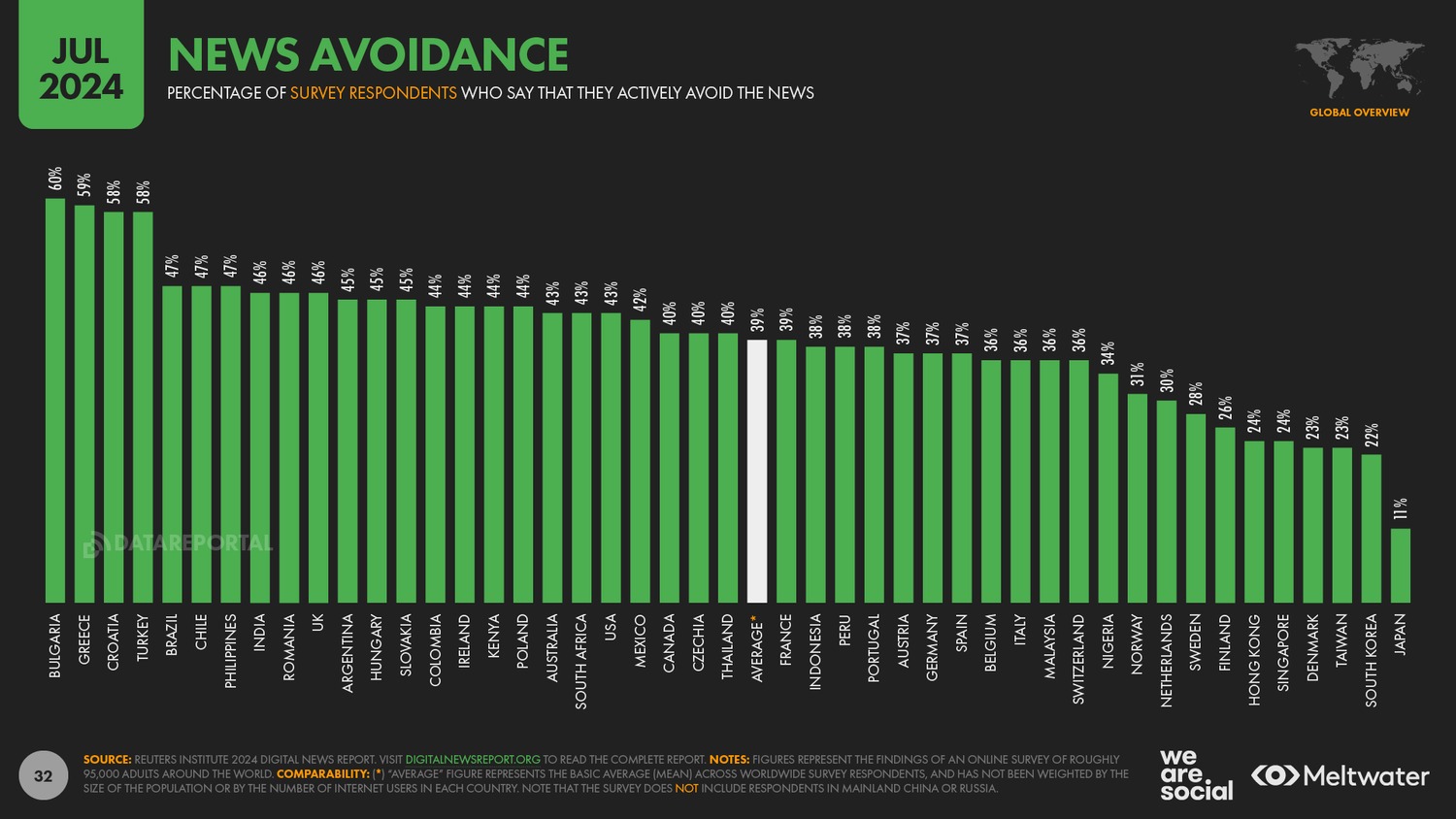In an era of unprecedented access to information, a paradoxical trend is emerging: people are increasingly choosing to turn away from news. The Reuters Institute for the Study of Journalism’s Digital News Report 2024 unveils a concerning pattern of global news avoidance that challenges traditional assumptions about information consumption in the digital age.
The Scale of News Avoidance
Join our WhatsApp ChannelThe data paints a stark picture: more than one-third (36%) of global respondents actively avoid news consumption. This phenomenon isn’t merely passive disinterest—it represents a conscious choice to disconnect from current events.
Regional Disparities
The pattern of news avoidance shows significant geographic variation:
| Region | News Avoidance Rate | Key Contributing Factors |
| Europe | >40% | Political polarization, news fatigue |
| Africa | 38% | Digital access barriers, trust issues |
| North America | 32% | Political division, media skepticism |
| Asia | <20% | Strong media trust, civic engagement |
Understanding the Exodus
The research identifies four primary drivers of news avoidance:
- Emotional Toll (42% of respondents)
- News fatigue from negative content
- Mental health preservation
- Anxiety about global events
- Trust Deficit (38% of respondents)
- Perceived media bias
- Conflicting information sources
- Political polarisation
- Information Overwhelm (35% of respondents)
- Content oversaturation
- Multiple competing sources
- Difficulty in verification
- Digital Distractions (28% of respondents)
- Entertainment alternatives
- Social media competition
- Short-form content preference
READ ALSO: Rumoured Death Of COAS Fake News- Nigerian Army
Societal Implications
The rise in news avoidance carries significant consequences for democratic societies:
Civic Engagement
- 15% decrease in local political participation
- 23% reduction in voter information seeking
- 31% drop in community issue awareness
Information Ecosystem
- Growing echo chambers
- Increased vulnerability to misinformation
- Weakening of shared public discourse
Industry Response and Innovation
Media organisations are adapting to combat news avoidance through several strategies:
Content Evolution
- Solution-focused journalism (+27% engagement)
- Balanced coverage initiatives
- Transparent reporting methods
Platform Adaptation
- Mobile-first delivery
- Personalised news experiences
- Interactive storytelling formats
Trust-Building Measures
- Fact-checking partnerships
- Source transparency
- Community engagement initiatives
Looking Forward
The future of news consumption hinges on the industry’s ability to address these challenges:
- Content Strategy
- Balance between informing and overwhelming
- Integration of positive news
- Audience-centric approaches
- Technology Integration
- AI-powered personalisation
- Enhanced user experience
- Multi-platform accessibility
- Trust Rebuilding
- Transparency initiatives
- Community involvement
- Educational outreach
Conclusion
News avoidance represents more than a temporary shift in media consumption—it signals a fundamental change in how people engage with information. The challenge for media organisations isn’t just to produce news but to make it accessible, trustworthy, and valuable to increasingly selective audiences.
The path forward requires a delicate balance between maintaining journalistic integrity and adapting to changing consumer preferences. Success will likely come to organisations that can effectively combine traditional journalistic values with innovative delivery methods.
Methodology Note: This analysis draws from the Reuters Institute Digital News Report 2024, which surveyed 46 markets across six continents. The study employed a combination of quantitative surveys and qualitative interviews to gather data on news consumption patterns.













